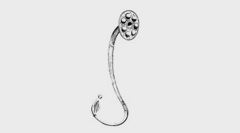Keywords
emigration, immigrant life, travel, Danish minority
Abstract
Editor's Introduction. For several years, I have been working on a description and analysis of emigration from the extensive region that made up the large estate of Skjoldesncesholm in central Sjcelland during the second half of the nineteenth century. Of all the many pictures, letters, and accounts that have passed through my hands, one collection in particular stands out: a travel diary and twenty-four letters written by a young man named Jens Christian Andersen, who emigrated in the year 1894. Before he left home, the seventeen-year-oldC hristian, as he was called, promised to keep a travel diary and also to write and tell about his experiences. He kept his promise. On the journey from Copenhagen to Raymond, Racine County, Wisconsin, he wrote regularly about what he was experiencing. He sent home two travel diaries, of which the first, describing the journey at sea, has unfortunately been lost. Two surviving letters, however, compensate to some degree for the lost diary. His correspondencew ith his parents and siblings in Denmark began after his arrival in Racine County. Twenty-one of these letters survive, written in succession during the first nine months of his new existence. In addition, there is a letter that Christian wrote to his parents right before he left and another that he sent to his sister in the year 1907. Christian's letters, like so many other America letters, tell about all the new experiences in an immigrant's life, problems with language and difficulties in finding work, the thoughts and feelings he had in the midst of so much that was foreign to him. In many ways, however, his travel diary and letters are different from the ordinary run of immigrant accounts. Their content in large measure grows out of Christian's answers to questions asked by his family. Consequently, a different picture gradually crystallizes out of them, a picure of what ordinary people in Denmark thought or heard was different, unusual, or perhaps even wrong about conditions in America. Christian's replies to his family's questions are very long and detailed. He goes into the smallest details when he describes the society he was living in, and what he experienced there. As a result, the reader gets a finely nuanced picture of Racine County in the years 1894-95. Large and small, everything is described on the basis of how the society was organized and functioned, even down to how many young women had false teeth. These contemporary reports from an area where some 3,500 native Danes were living at that time makes a unique contribution to the description of immigrant life. The letters tell how the Danish minority associated with each other, helped each other, worked their farms, and much more. Christian had attended a rural public school at home in Denmark. When he was confirmed, he received the highest mark of all pupils in his class. His letters also show that he was talented and able. He had a good command of the Danish language and did not make many spelling errors, though his punctuation tended to be minimal. His approach to his subject was what one might call journalistic. He was curious, questioning, and thorough in his collection of information. The maturity and clarity with which this young man expressed himself is impressive. His writing is so lively and interesting that the reader can almost hear him telling it. At one point, he even gives his formula for writing a letter: Write it down the way you would tell it to somebody sitting next to you. Thanks to Inga Bedker, Herdis Nielson, and Ingrid Lund Frederiksen for allowing me to copy the travel diaries and letters, and for permitting me to publish them with my commentary. I also want to thank Ingrid Lund Frederiksenf or cooperating with me to transcribet he documents and follow the tracks of Christian's path in America. Members of Christian's family in America have also provided assistance in following his path, for which I thank them. Thanks also to the many people who loaned pictures from their private collections. Benjamin Hansen has been very helpful in identifying many of the people mentioned in the letters. Finally, I want to thank my husband, Petr Viscor, for his support and patience, and cand. mag. Gerd Malling for a critical review of the manuscript and many constructive suggestions
Recommended Citation
Viscor, Pia
(2008)
"I'm Going to America: Jens Christian Andersen's Travel Diary and Letters from Racine, Wiscon sin, 1894-96,"
The Bridge: Vol. 31:
No.
2, Article 7.
Available at:
https://scholarsarchive.byu.edu/thebridge/vol31/iss2/7
Included in
European History Commons, European Languages and Societies Commons, Regional Sociology Commons


